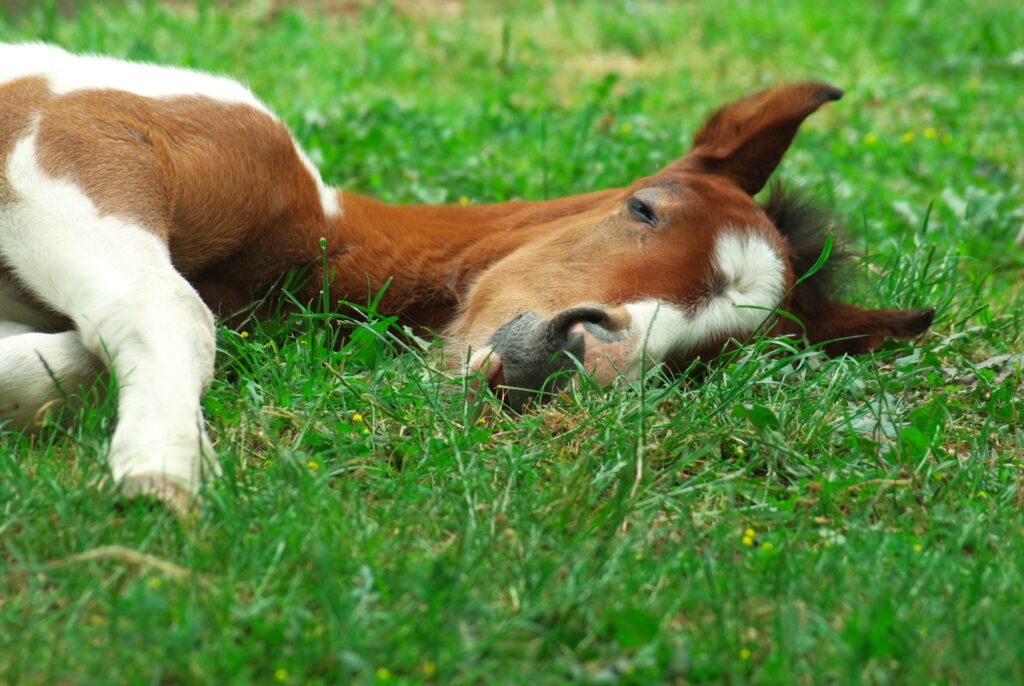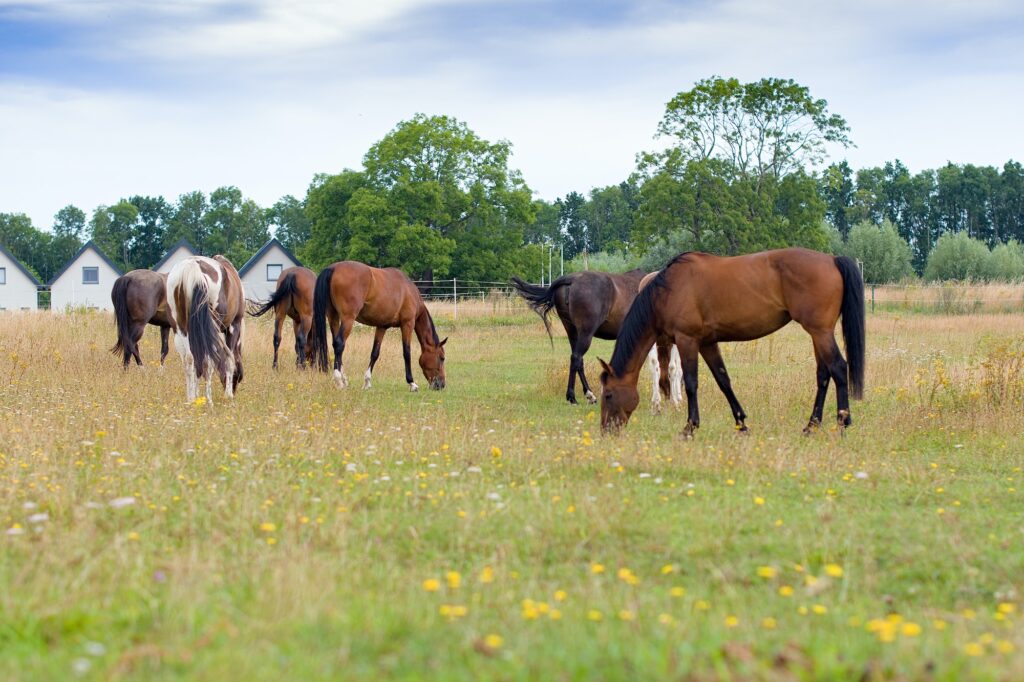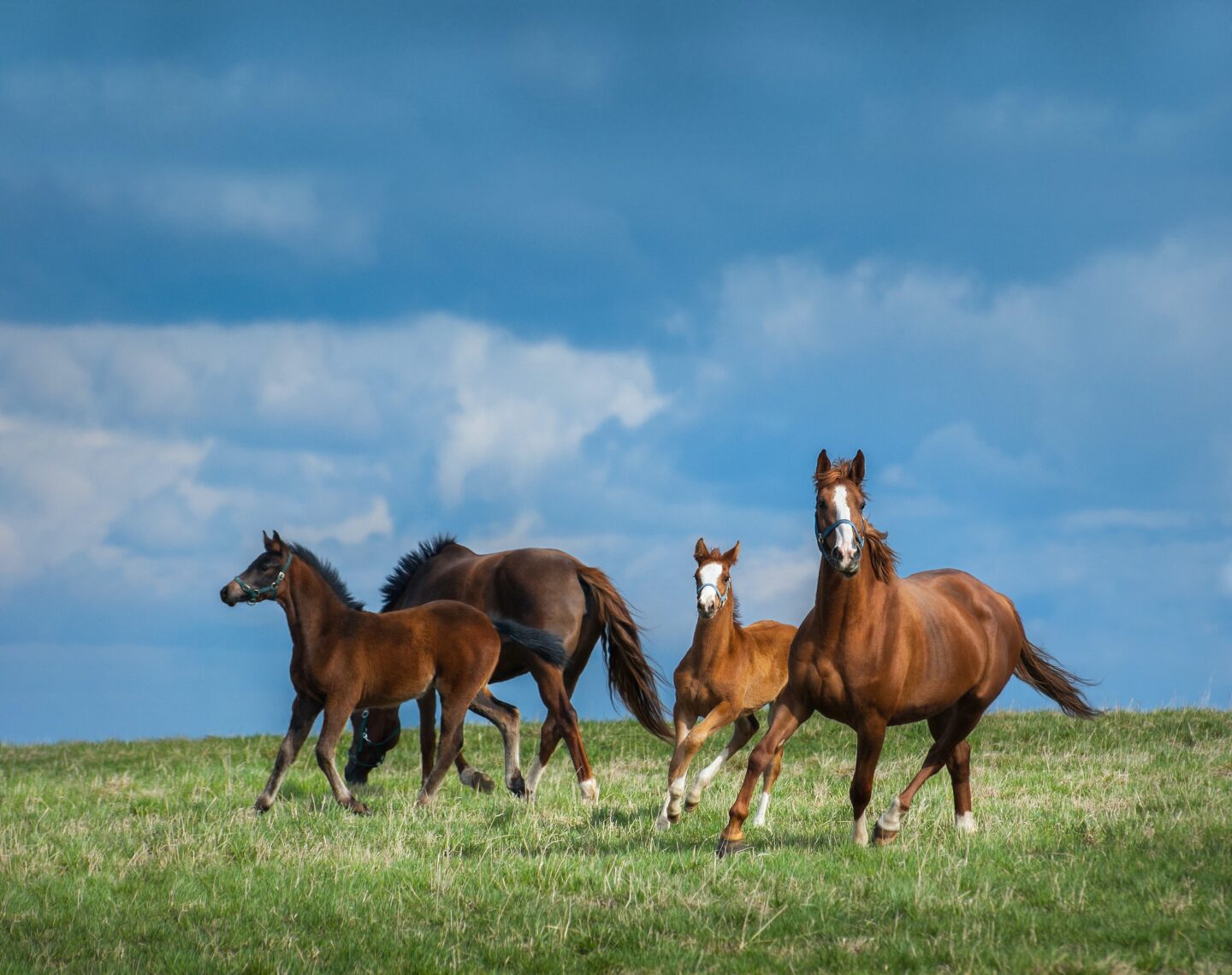Horses are fascinating creatures that have been domesticated by humans for thousands of years. They have played an important role in history, culture, and art. But how much do you really know about these majestic animals? Here are 5 amazing facts about horses that you probably didn’t know.
1 – Horses can sleep standing up or lying down

Horses have a special system of tendons and ligaments in their legs that allow them to lock their joints and stand upright without using much muscle energy. This way, they can sleep standing up and be ready to flee from predators or danger at any moment.
However, horses also need to lie down for a few hours every day to enter deep sleep or REM (rapid eye movement) sleep, which is essential for their health and well-being. Horses usually lie down in a comfortable and safe place, such as a soft bed of straw or grass, and often with other horses nearby for protection.
2 – Horses have the largest eyes of any land mammal

Horses have very large eyes that measure about 5 cm (2 inches) in diameter. They have the largest eyes of any land mammal and can see almost 360 degrees around them. This gives them a great advantage in spotting predators or potential threats from far away.
Horses also have excellent night vision and can see well in dim light. However, horses have poor color vision and can only distinguish between blue, green, and gray tones.
3 – Horses can’t vomit or burp

Horses have a one-way digestive system that prevents them from vomiting or burping. This means that they can’t get rid of any toxins or indigestible materials that they might ingest accidentally. This also makes them prone to colic, which is a painful condition caused by gas accumulation or intestinal blockage in the stomach or intestines. Colic can be fatal for horses if not treated promptly and properly.
4 – Horses have different names depending on their age, sex, and breed.

Horses are classified into different categories based on their age, sex, and breed. Here are some common terms used to describe horses:
- A foal is a baby horse of either sex that is less than one year old.
- A yearling is a young horse of either sex that is between one and two years old.
- A colt is a male horse that is under four years old and has not been castrated.
- A filly is a female horse that is under four years old and has not been bred.
- A stallion is a male horse that is over four years old and has not been castrated.
- A mare is a female horse that is over four years old and has been bred or is capable of breeding.
- A gelding is a male horse that has been castrated at any age.
- A pony is a small horse that is less than 14.2 hands (58 inches) tall at the withers (the highest point of the shoulder).
- A draft horse is a large and heavy horse that is bred for work or pulling heavy loads.
- A warmblood is a horse that is a cross between a draft horse and a light horse (such as a Thoroughbred or an Arabian), typically used for sport or riding.
5 – Horses can communicate with each other and with humans

Horses are very expressive animals that use their body language to communicate with each other and with humans. They can convey their emotions, intentions, needs, and preferences through their ears, eyes, mouth, nostrils, tail, head, neck, and posture.
For a more comprehensive understanding of equine communication, you can check out my previous blog post titled “Horse Talk: Understanding Equine Communication.” . In that post, I delve deeper into the intricacies of how horses use body language to interact and communicate.
Here are a few examples of how horses use their body language:
- Ears: Horses can move their ears in different directions to indicate where they are focusing their attention or how they are feeling.
- Eyes: Horses can show their emotions through their eyes as well.
- Mouth: Horses can use their mouth to express their mood or needs.
- Nostrils: Horses can use their nostrils to breathe, smell, or snort.
- Tail: Horses can use their tail to swat flies, balance, or signal their mood.
- Head: Horses can use their head to show their interest or disinterest in something.
- Neck: Horses can use their neck to stretch, bend, or arch.
Endnote
Horses are amazing animals that have many surprising and interesting facts about them. They can sleep standing up or lying down, they have the largest eyes of any land mammal, they can’t vomit or burp, they have different names depending on their age, sex, and breed, they can communicate with each other and with humans using body language, they are very social animals, and they come in many different shapes, sizes, colors, and patterns. There are over 300 breeds of horses in the world, each with its own characteristics, history, and purpose.
I hope you enjoyed this article and learned something new about horses. If you liked this article, please share it with your friends and family who love horses or animals in general.
See you next time!
